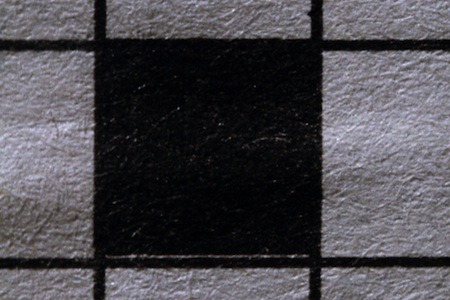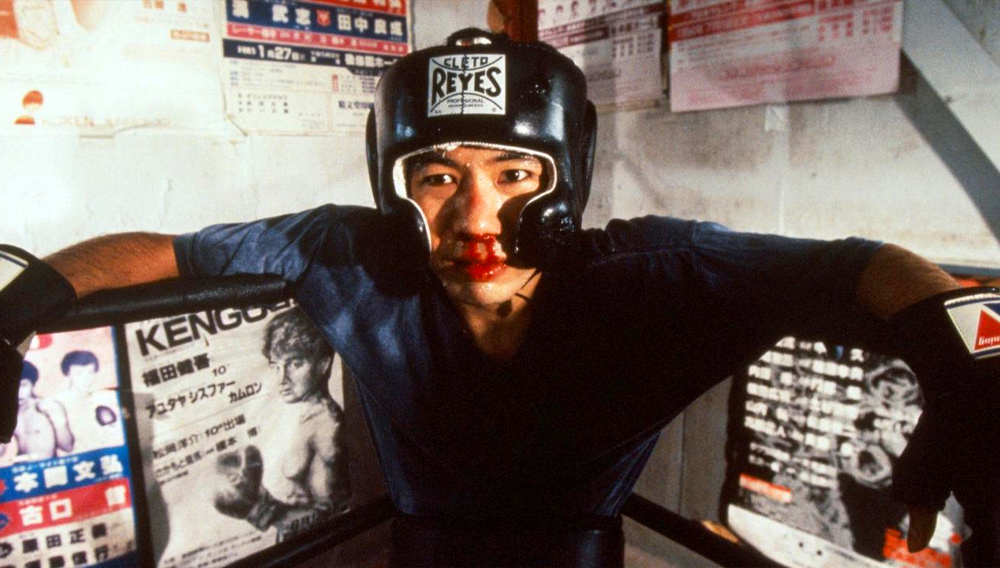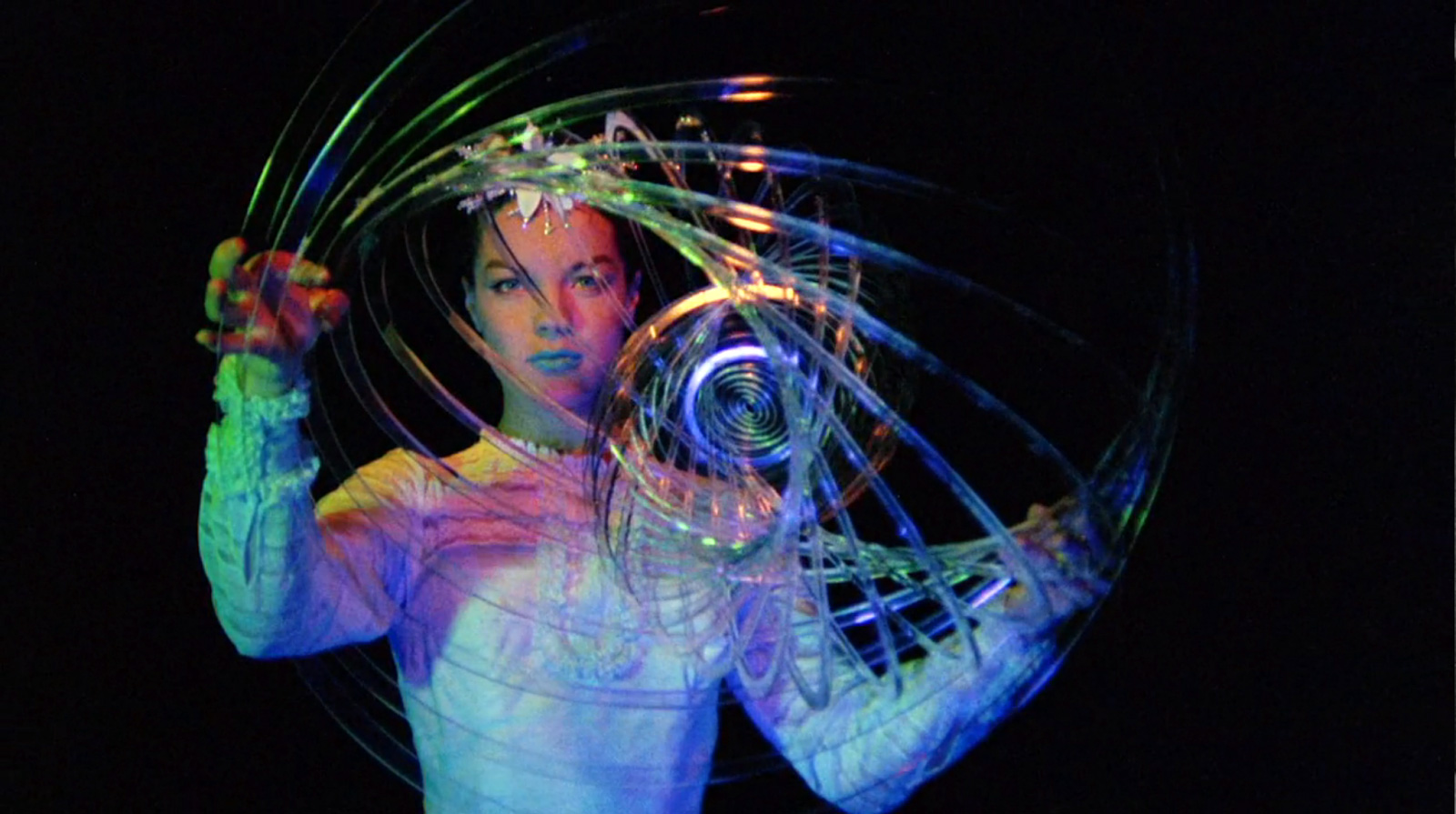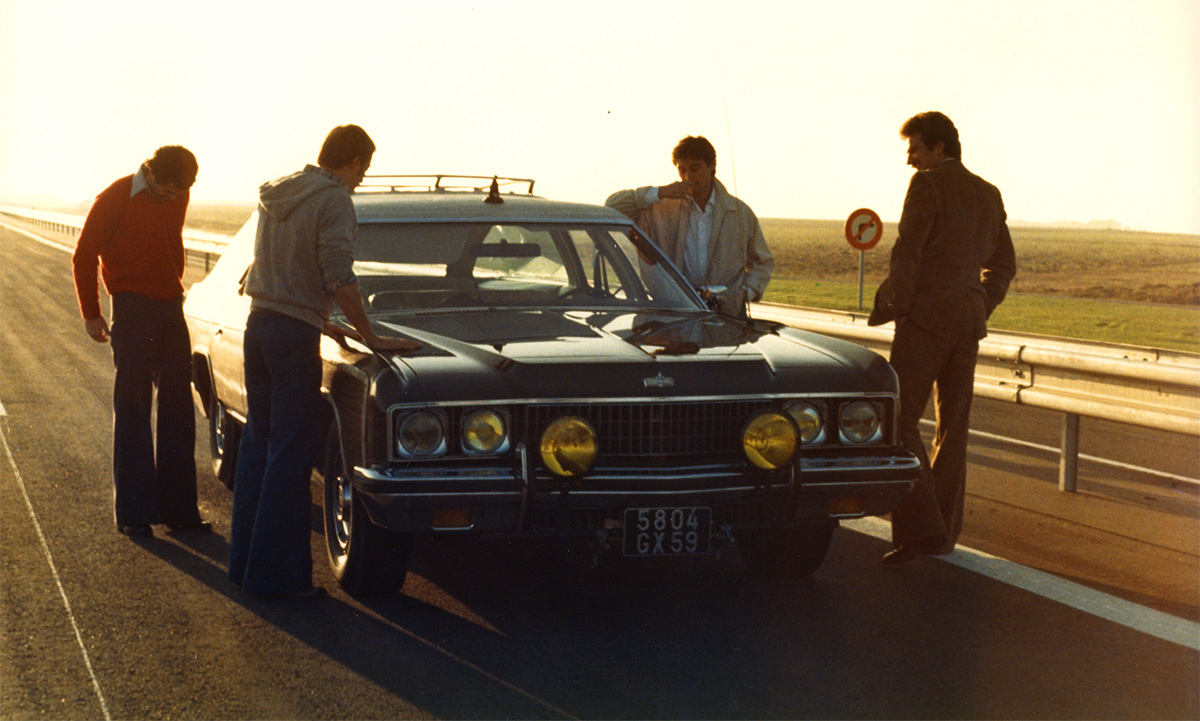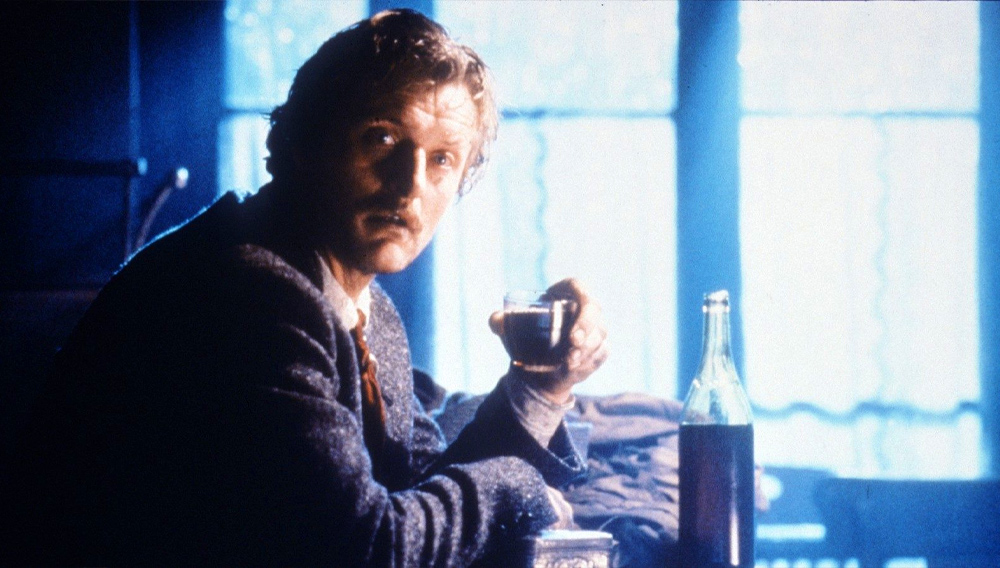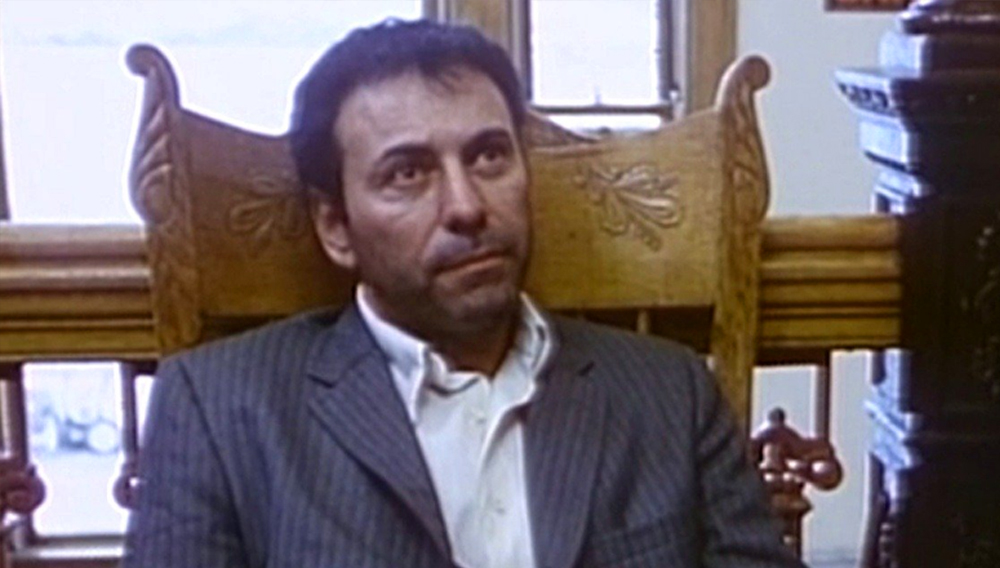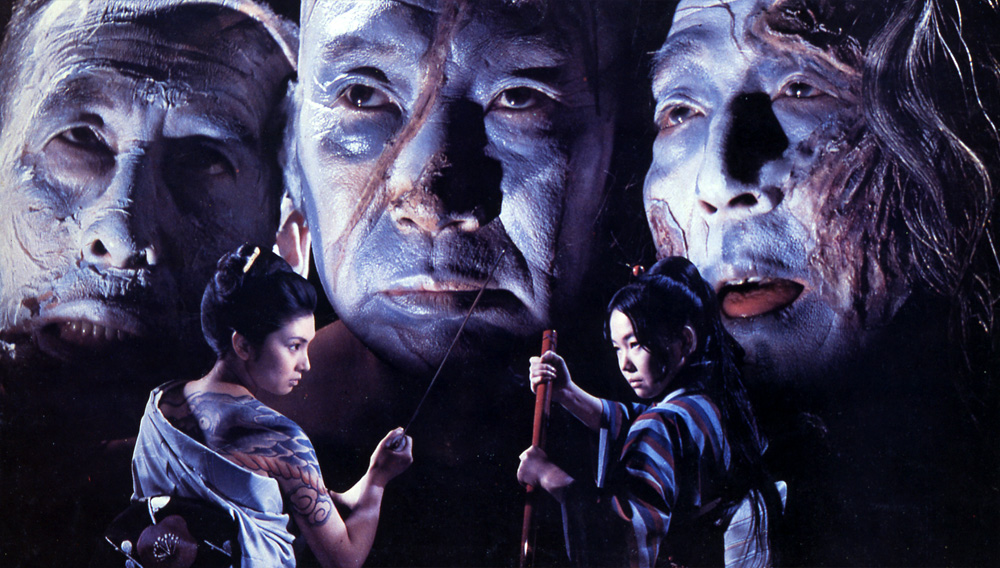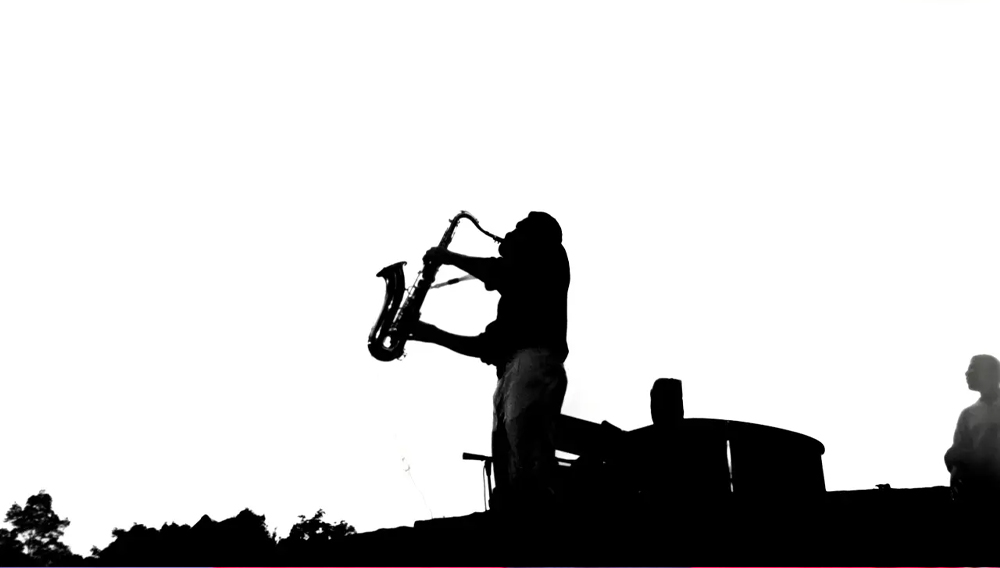I had to leave New York before the marquee event of the Views from the Avant-Garde section of this year’s New York Film Festival. The ever austere Peter Kubelka revisited his seminal flicker film, Arnulf Rainer (1961), in both an expanded projection performance and sculpture totaling the Monument Film. The intellectual aura of Kubelka’s work has been enormously influential, but impurity reigned throughout the preceding three days at Lincoln Center. Irony, myth, history, landscape, literature: none of these was off-limits to the varying formalisms on view. Kubelka may have been the destination, but the stage was set by the late Chris Marker and Raul Ruíz—paid tribute here by masterworks Sans Soleil (1982) and The Blind Owl (1987).
French filmmaker Nicolas Rey’s experimental feature anders, Molussien (differently, Molussia) made for a different kind of event, with singularity figuring more as a game of chance than a performance. The film’s nine reels are randomly shuffled for each screening, but this is only the most obvious layer of contingency: Rey also entrusted the selection of texts from Günther Anders’s posthumously published 1931 novel, The Molussian Catacomb, to a friend and received the soft-hued Gevaert 16mm stock from another well-wisher. Industrial landscapes in France provide a visual correspondent for Anders’s philosophical fable of fascism, but it won’t do to call The Molussian Catacomb a source text for Rey’s work. The film takes place in the fissures between text image; all is latency, and the playfulness of Rey’s structure—as well as the hand processed swirl of celluloid and those inexplicable moments when the camera set to spin as if on a gyroscope—develops a surprising buoyancy at odds with Anders’s deep-rooted pessimism.
David Gatten’s first digital work, The Extravagant Shadows, was similarly dialectical in its representation of text as image. Starkly economical in technique but utterly labyrinthine in meaning, the film undertakes the head-scratching question of what it would mean for a film to be of its textual sources. A historical narrative of love separated across space and time is embedded in various codes and correspondences, all of it pocked by ellipsis and obscurity, never unfolding so much as digressing, disclosing, doubling back. The Extravagant Shadows is a curious combination of the language poets and Victorian novels, with a guiding example in Henry James’s blossoming sentences. Indeed, I have never been so acutely aware of the temporal aspect of the master’s perambulations.
Visually speaking—one wants to stop the sentence right there. The Extravagant Shadows begins with a row of books packing the width of the screen. A pane of glass covers the library shelf; Gatten and his camera appear in its reflection; the artist paints the glass in vertical strokes. The paint dries, and text appears—a few “pages” at least. Then a fresh coat of paint is added. The gesture is repeated again and again with a few striking variations. It takes a certain amount of chutzpah to ask the audience watch paint dry, though digital compositing of this process does odd things not only to color but also to time. One’s sense of the screen’s flatness is similarly pliable over the course of the screening, and as with Gatten’s Secret History of the Dividing Line series, a great deal of energy is invested in the phenomenology of reading. The Extravagant Shadows is not an easy experience, but at a certain point I found myself letting go of my expectations for a film and instead having a very different experience of literature akin to something like Julio Cortázar’s Hopscotch.
At the other end of the spectrum, Michael Robinson’s Circle in the Sand invokes the cosmos with generous throws of glitter. With a strikingly costumed cast wandering the post-apocalypse, the film plays like a zonked L’Avventura (1960). Three sparkle-eyed women walk the California coast, while a forlorn troupe of military men wait on patrol. The ladies unearth misbegotten artifacts of a forgotten world in the sand: anonymous Yelp reviews, skipping Counting Crows CDs, and dayglo nails are just the beginning. Stretching beyond the short format, Robinson’s imagination remains prodigious in the particulars. The credo bookending the film—“We wanted to destroy knowledge but within knowledge”—does nicely as a description for the collagist’s quixotic task.
Ben Rivers’ The Creation as We Saw It also tinkered with origin stories. Shot in the Vanuatu Islands, an anthropological Valhalla due to the famed Cargo Cults, the film intersperses lustrous black-and-white portraiture with intertitles offering ingenious accounts for why a pig walks on all fours and how a local volcano came to be. Poetically amending the conventions of salvage anthropology, Rivers doesn’t conform to our expectations of island people (there’s that cell phone, for starters) or ethnographic distance (the cutting and striking use of color ties us to the mythic imagination). Both The Creation as We Saw It and Phantoms of a Libertine may have seemed like relatively minor works after Rivers’ big 2011 (Two Years at Sea, Sack Barrow, installations of Slow Action), but they’re indicative nonetheless of his increasingly complex designs on narrative.
Phantoms of a Libertine was included on the “Phantom Residence” show, for me the most intriguing program of the weekend with four films insinuating unseen forces. Sarah Grace Nesin introduced her ambient S P E C T R E as a music video, though its looming images from the Brooklyn Aquarium and bridges drowned in color proved more alluring than that designation suggests. Laida Lertxundi’s The Room Called Heaven compiles seemingly disparate camera tests, including sensory gags (a hand plunging into a bucket of ice, a Frampton-ish lemon held in front of a person’s head), California landscapes, nude studies, and a couple of striking crystallizations of sync sound and film projection. Each of these meta-cinema reliefs is wonderfully transparent on its own; in combination they stir an oblique sense of longing. The culminating vision of heaven as a superimposition is simple as it is sublime.
The “Phantom Residence” show concluded with Apichatpong Weerasethakul’s short feature, Mekong Hotel. As with Worldly Desires (2005), Mekong Hotel seems to transpire just to the side of another film production (the as-yet-unrealized Ecstasy Garden in this case). Weerasethakul talks to a guitarist friend who supplies the Mekong’s plaintive score and (along with the river itself) through line. Regular Sakda Kaewbuadee complains that the dresser is full of shirts that say “Joe” (Weerasethakul’s nickname), and the actors look back at the camera when they finish a rehearsal. But as a horrific Phop Gost blends into Mekong Hotel’s actuality, the situation shifts as readily as the light on the river.
Mike Gibisser’s The Day of Two Noons offers a similarly compounded understanding of reality, albeit here couched in an hour-long essay relating 19th-century developments in timekeeping to Gibisser’s grandmother’s Alzheimer’s. The filmmaker blends documentary material from before and after her death, effectively doubling his investigation of his grandmother’s “memory.” One appreciates the underlying resonances between his grandmother’s repetitions and puzzled drawings of clocks with the “tesseracts” that obsessed Eadweard Muybridge (the blur of motion resulting of early photography’s long exposure times, representative of time’s volume) and historical reenactments of the completion of the transcontinental railroad (itself emblematic of the need for standard time zones), but in the end the connections remain hazy. Gibisser seems to want a broader frame for experience of chronology, but it’s not clear to what ends beyond elaborating the artifice of standardized time.
Several other films at Views evinced cinema’s mediating role in time and space through radical revisions of the travelogue. Building off his film shot along the Los Angeles water supply (2010’s Psychohydrography), Peter Bo Rappmund’s Tectonics maps the length of the U.S.-Mexico Border, a dividing line that remains curiously underrepresented in American cinema. The pulsating geographic forms in Rappmund’s compacted time-images also appeared in another work on display at Views, Vulgar Fractions. This compilation may have lacked the features’ unifying concepts, but it was enjoyable in its own right—like B-roll for the most psychedelic Western never made. James Benning’s small roads takes to the West in 47 tableaus, shifting the terms of his 16mm railroad film, RR, to a different vehicle both in terms of content and medium (this time working in a highly pliable HD). A powerful and at times hallucinatory invocation of the road as an organizing principle of landscape, small roads nonetheless perhaps trusts too much to its familiar idea of the road’s return to silence.
Lori Felker’s resourceful Across and Down employed sphinx-like English crosswords found during a trip to Uganda in order to structure her densely rhythmic film collage of local education and communication. Felker playfully invokes the traveler’s desire to delineate the world while leaving meaning gloriously up for grabs. Even more vertiginous was Fern Silva’s globetrotting Concrete Parlay, a kaleidoscopic magic carpet ride through cultural rituals, orientalist cliché, misbegotten revolutions, false monuments—all of it a witty détournement of the First World point-of-view that seemed especially relevant with misunderstandings between America and the Middle East piling up one on top of another. Ben Russell and Guillaume Cailleau’s Austerity Measures took a quieter approach to charting the visitor’s sense of disorientation, filtering traces of an Athens tumult through an unpredictable spray of hand-processed colors.
New work by San Francisco filmmakers Nathaniel Dorsky and Jerome Hiler stayed closer to home. Exploring digital surfaces and daydreaming faces with characteristically luminous imagery, April highlighted the undersold social aspect of Dorsky’s observational cinema. Hiler’s New Shores picked up where In the Stone House left off, the new film collecting twenty years of jeweled images from life in San Francisco (including significant behind-the-scenes footage from Revenge of the Cheerleaders, a singular entry in the filmographies of Dorsky and David Hasselhoff) where In the Stone House polished illuminations of 1960s New Jersey in the particulars. I first saw Stone House last spring, and I was struck by how well I remembered it watching it again. Its epiphanies of life experience are so perfectly distilled as to make the whole thing seem like one of the imagined chains of rooms practiced for the art of memory. The full richness of Hiler’s Kodachrome escapes conscious recall, however, and so it was a welcome privilege to return to these brilliant impressions at the heart of the world.


